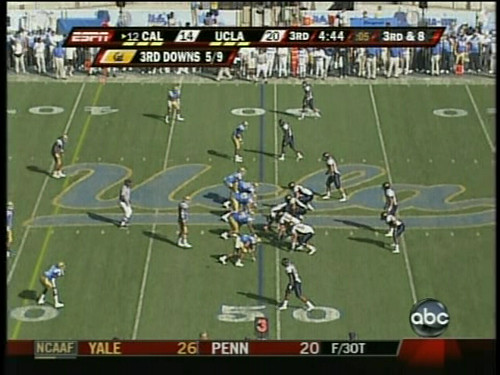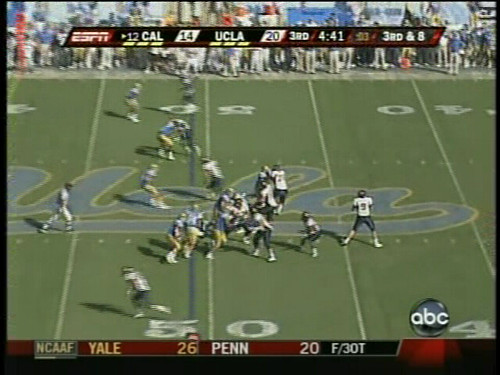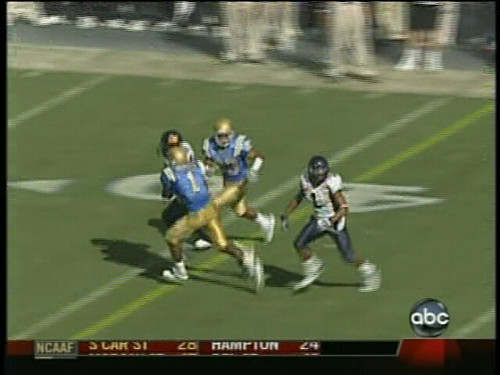How Cal Lost in the Rose Bowl, Part I
Note before you start: This is an extensive, abstract, three part piece. Better grab some popcorn and chow down. Summer might be around the bend, but here at Bears Necessity it’s school time, football fanatics. Parts II and III coming later this week.
UCLA 30, Cal 21. While the Oregon State game was a mixture of turnovers, failed 4th down conversions, and other miscues (I’ll get to that game once I’m done recovering from it, so expect a post in 2015), for the most part the mistakes of both Bruins and Bears cancelled each other out. So how did we lose this game? I’m going to examine the offensive end this week.
Now the snapshots I’ve given you of the UCLA defense aren’t exactly typical of their play (a 5-2 set and what appears to be a Cover 2 shell). Here’s a real example of the standard UCLA defense: The Cover 4.

The difference between the Cover 4 and the Cover 2 (as given in the link above) is as follows:
The other big difference between cover 2 and cover 4 is the role of the corners. In pure zone cover 2 the cornerbacks stay low and defend the flats in their realm of responsibility. In press coverage they bump the WR’s as they release and hand them off to the deeper safeties on the play while the corners play the shorter routes and watch for backs releasing into their area. In cover 4 the corners normally have responsibility for the WR’s they align with and stay with them on deep routes.
As you can see in the snapshot above, the defensive backs have a lot of distance between the receivers to watch out for the deep routes that Longshore is capable of.

Now, the advantage of the cover 4 is that it negates the speed of Cal on the deep ball. The corners of UCLA should be able to run with them (hence why Tedford needed to “trick” them to get the previous TD). However, with a speedster like Jackson, you want to try and get a little closer into him–giving him too much separation will allow him to catch that ball.

You can see how one defensive back is staying with Hawkins the entire way, thinking that’s the best way to prevent Longshore. However, just above Hawkins is Jackson, cutting inside while the corner still thinks he’s moving to the outside.

A closer view of the previous image. Again you can see how much separation Jackson has compared to Hawkins.

A closer view of the receivers shows us that Hawkins sets a partial pick on Verner by moving between him and Jackson, providing the separation DeSean needs to clearly take that ball. You can see the vulnerability of the Cover 4 right here–by backing away from the receiver, the short pass is going to be there.

Complete for a first down! And therein lies the Cover 4’s weakness. Because the D-Backs have separation with their receivers, an accurate QB like Longshore can pick them apart with these short routes. They don’t allow enough time for the corners to adjust to the routes the receivers run.
Coming next in the series: Other ways Cal exploited the Cover 4.
- None Found
Comments (4)
 Logging you in...
Logging you in... Comments by IntenseDebate



 Loading IntenseDebate Comments...
Loading IntenseDebate Comments...
Comments are closed.